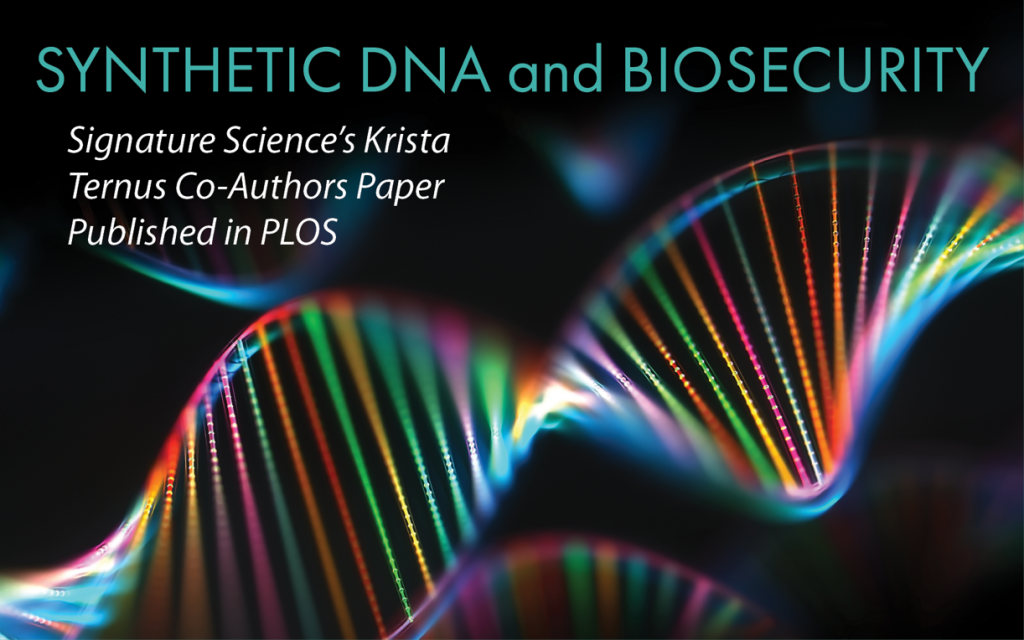
Dr. Krista Ternus worked with colleagues from Rice University and Texas A&M Health Science Center to author “Synthetic DNA and biosecurity: Nuances of predicting pathogenicity and the impetus for novel computational approaches for screening oligonucleotides.”
Overview:
DNA synthesis technologies are enabling rapid advancements in the field of synthetic biology, which involves the design and fabrication of novel biological components. The immense promise of DNA synthesis technology is unmistakable, but so is its potential for intentional or accidental misuse. In the interest of biosecurity, the United States Department of Health and Human Services (HHS) issued its Screening Framework Guidance for Providers of Synthetic Double-Stranded DNA in 2010, which calls on commercial providers of double-stranded DNA (dsDNA) to voluntarily screen all orders. Most notably, a group of dsDNA synthesis companies known as the International Gene Synthesis Consortium (IGSC) has implemented the Harmonized Screening Protocol (HSP) in alignment with the HHS Guidance. While there is not a single DNA screening algorithm used by all IGSC members, DNA-screening software typically follows HSP guidance by aligning a query sequence to a relatively short list of biological toxins and select agent genomes, genes, or proteins. We herein describe challenges involved in the current screening process, ideas for improvements, and examples that illustrate why current obstacles to advancement are so critical to overcome.
Read the full paper here.

